Photos by Kindra Clineff
When she adopted the ca. 1700 Oliver Goodrich House on Boston’s historic North Shore, Jessica Marbain knew she would have to walk a fine line. “You have to respect the integrity of an old house, but it needs to be livable,” says the interior designer. When she took on this project in 2014, she faced substantial issues of comfort. The interior was only partially insulated and there was no heat to the second floor.
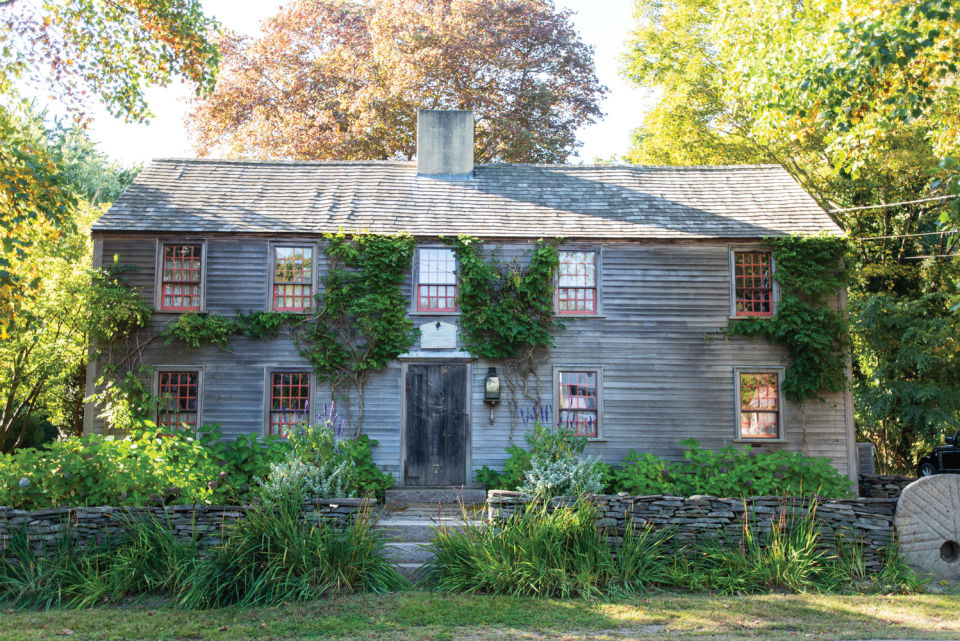
Trumpet creeper (Campsis radicans) trained on the walls and a line of ‘Nikko Blue’ hydrangeas soften the severe, Puritan façade of the Oliver Goodrich House.
On the plus side, “the house is adorable.”
Presenting a modest, strict, Puritan face to the street, the old house has picturesque rooflines, a stone retaining wall that incorporates a millstone, and a visionary garden that might be called quirky. Alluding to the town’s agricultural heritage, the property occupying a bit less than an acre has a hornbeam tunnel, a small orchard—and a boxwood maze.
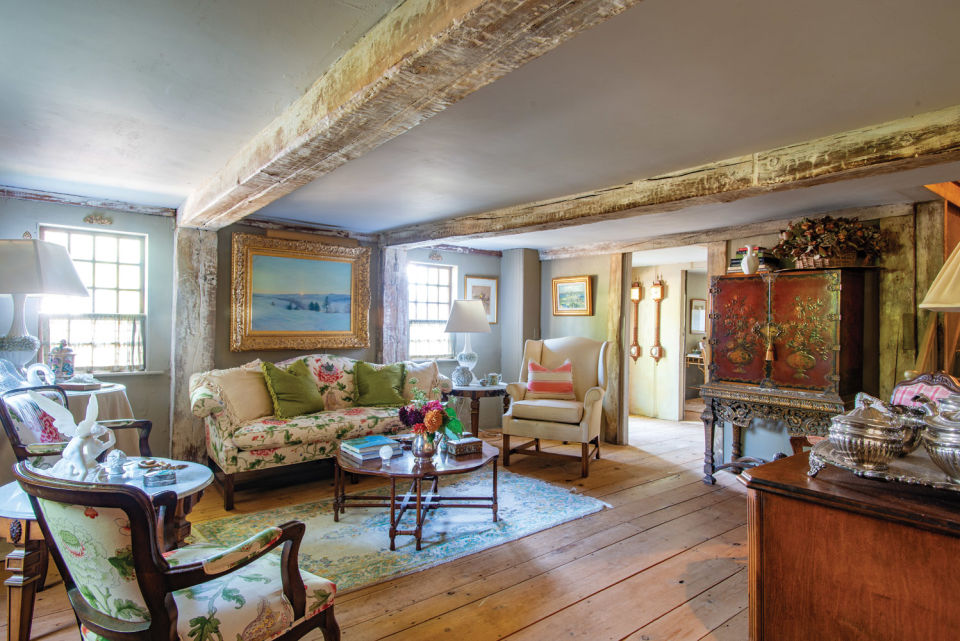
Wth its light-hearted, floral upholstery, the living room is luminous in white.
The interior is a phenomenon of preservation. Every square foot is endowed with the artistic, insightful, collaborative work of the previous owners, Alan Collachicco and William Towne, and the craftspeople they hired. Marbain’s goal was to make the house comfortable by today’s standards. She would also make it personal by adding furnishings to reflect her style. (The designer admits to a preference for expanses of space and lots of glass—while this weathered house has tiny windows and “cozy” rooms.) “A period house should be respected, but also appreciated for how it can survive,” Marbain contends.
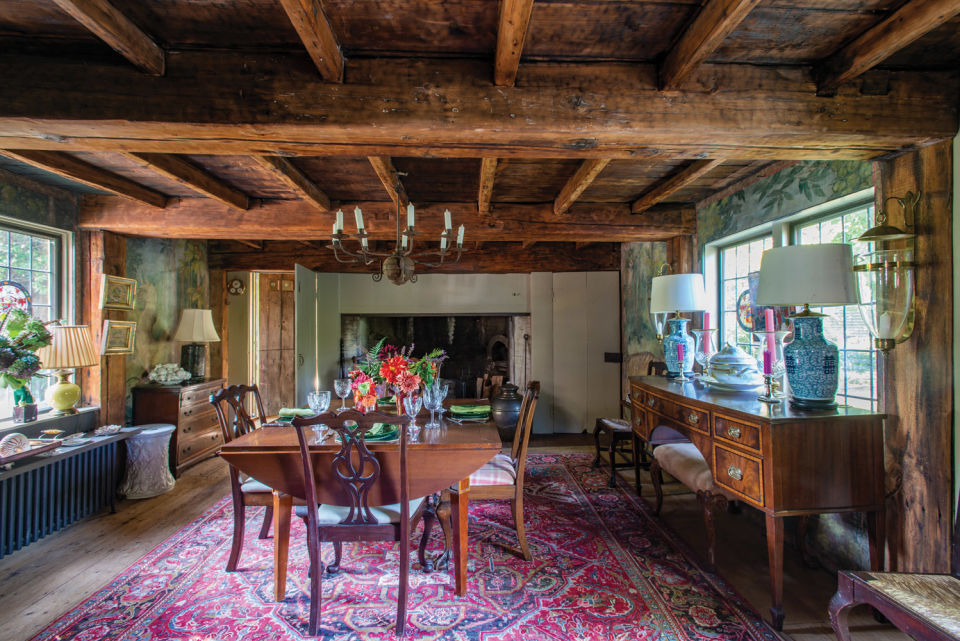
Today’s dining room retains the original fireplace with its functioning beehive ovens and antique iron fireback. Stained-glass crests are set into both windows. Mural paintings feature fanciful creatures. With original beams and fireplace, the dining room is in the gambrel section that juts from the back of the house. A mahogany sideboard and oriental carpet add luster. The chandelier is candlelit.
Originally the home of a Revolutionary War patriot who became one of General Washington’s bodyguards, the Oliver Goodrich House has been faithfully preserved over centuries. Prior owner Collachicco was a talented interior decorator who had a singular vision for the house. While preserving its integrity, he added layers, including murals by the fine artist Julia Purinton of Medusa Studio.
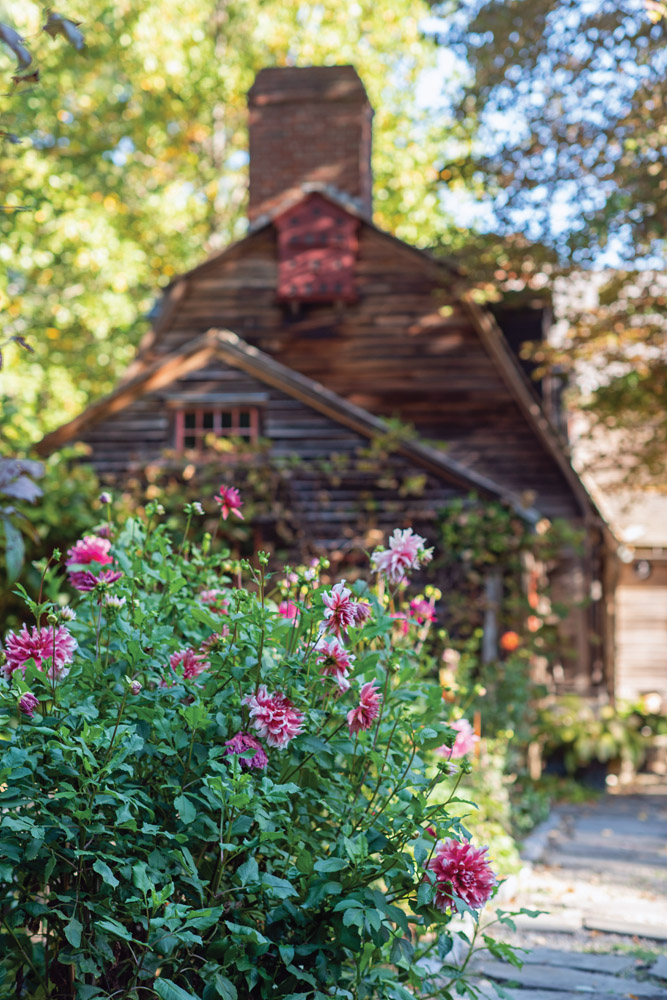
The oldest part of the house dates to ca. 1700; a gambrel section and kitchen ell came later.
“He was what I call a ‘method decorator’,” Purinton says. “He would create a fictitious story, a script, for each project and decorate the space accordingly. The story he created for his own house was of a family who moved to America from Europe, centuries ago, bringing with them fine trappings that would embellish their new home with Old World sensibility and imagination.” Purinton created wall murals echoing medieval tapestries, adding warmth and character to the rooms. Whimsical creatures and jungle vines run through the dining room. Faux-framed scenes are painted on the upstairs landing. Collachicco took the idea even further: to age the new paintings, he sanded and applied wax to the walls. When Marbain arrived, she felt compelled to preserve all the layers of the house.
“When I first looked at the house,” she remembers, “I thought there’s no way I can do this,” given her personal design style. It was the location near her daughter—and the garden—that sold her. “I’ve never regretted the purchase,” she says.
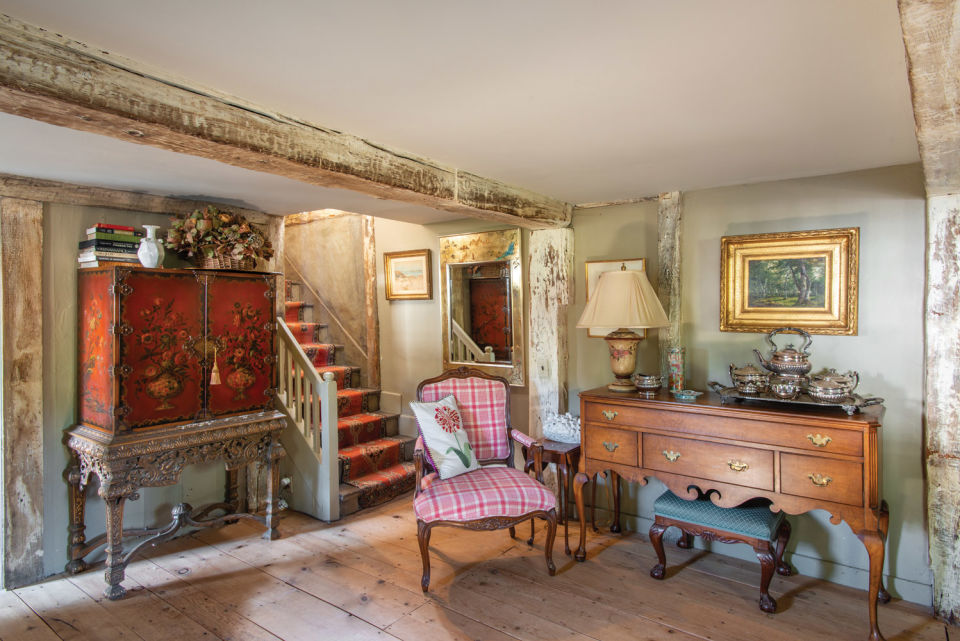
An English chinoiserie cabinet adds mystique. Rooms are softly lit by table lamps.
The conscientious revitalization required technical savvy. By using a pump to extend the oil-fired, hot-water system, she brought heat to the second floor. Air conditioning was added. The house has low ceilings and small windows, indicative of its age. Marbain retained the solid exterior doors, but added glass storm doors so that, with the old doors open, light could enter. “It expanded the psychological size of the small rooms,” she says, “yet when I close the old doors, the house looks unchanged.”

Buying new furniture was unnecessary. Marbain did what generations always have, using family heirlooms and hand-me-downs. “My parents’ furniture got a second life, and I was surrounded by things that are important to me,” she says. Reupholstered in Brunschwig & Fils fabrics, the furniture joined light-colored rugs, bringing an Arts & Crafts Movement layer to the house’s story line. Marbain added her own collection of pastoral art work.
Located in an existing rear extension, the kitchen is airy and needed no alterations. The previous owners had painted it a buttery color and added modern lighting. In the parlor, Marbain kept the muted green paint color already on wainscotting “It’s a good neutral, picking up colors in the furnishings; it looks right in every season.”
She kept sightlines flowing so that space would not be segmented into blocks of color. A generous number of lamps give the ancient house warmth in the evening. Glazed ceramic lamp bases further enhance the light, as do mirrors and glassware. “You can capture light all sorts of ways,” Marbain says.
WHIMSY IN THE GARDEN BUT WITH HISTORICAL ROOTS
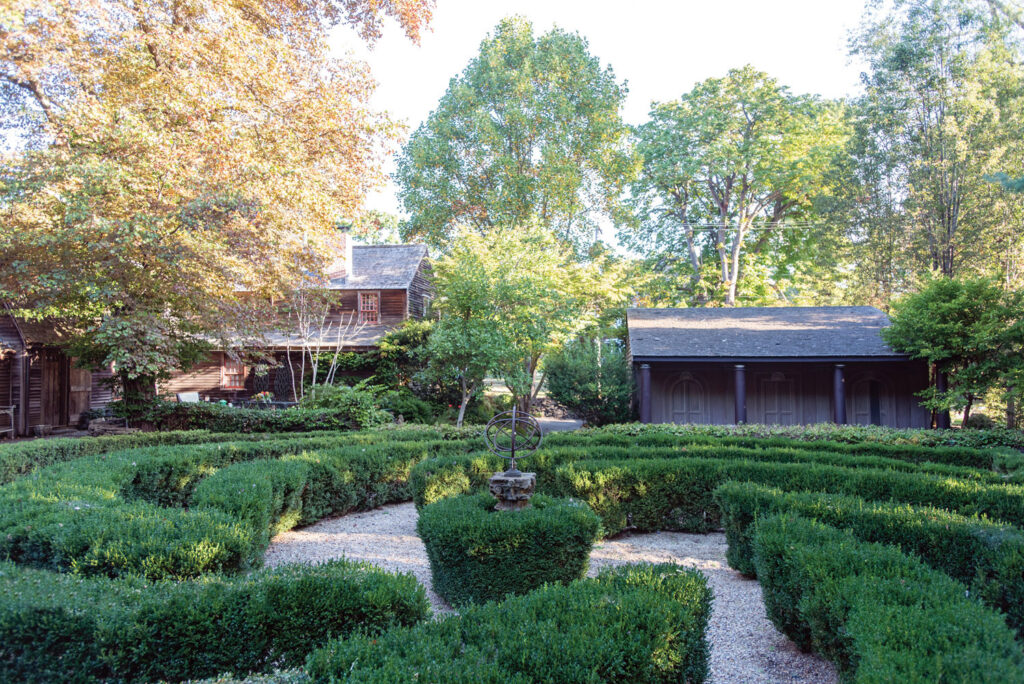
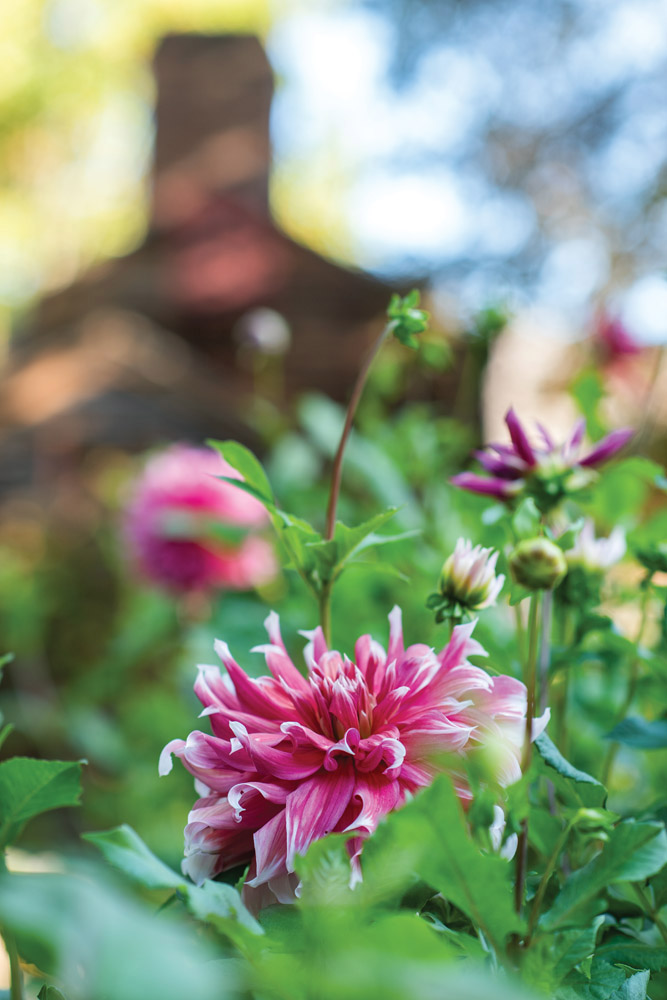
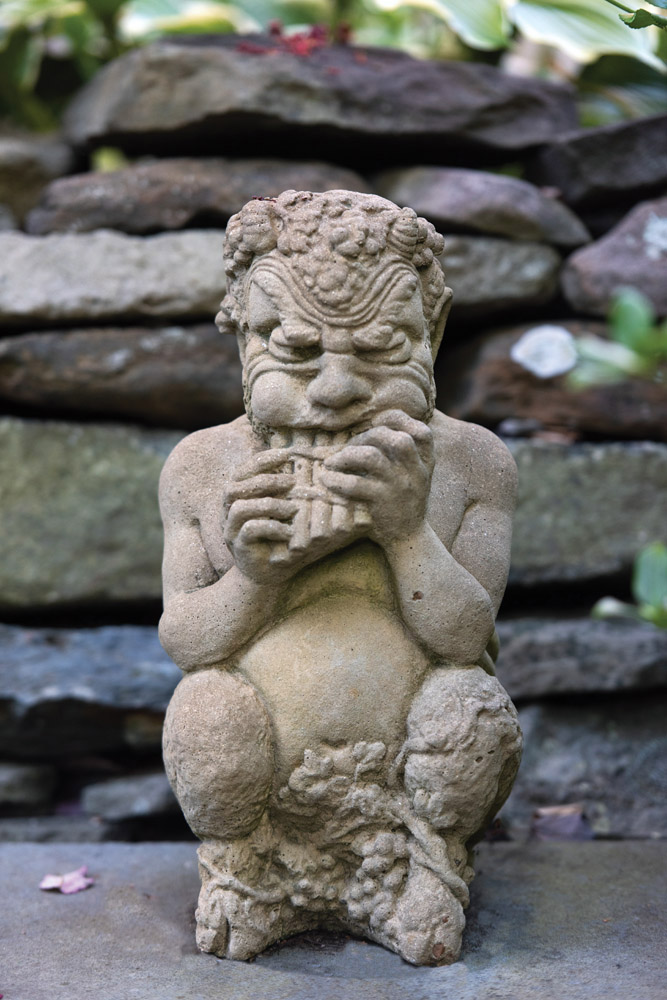
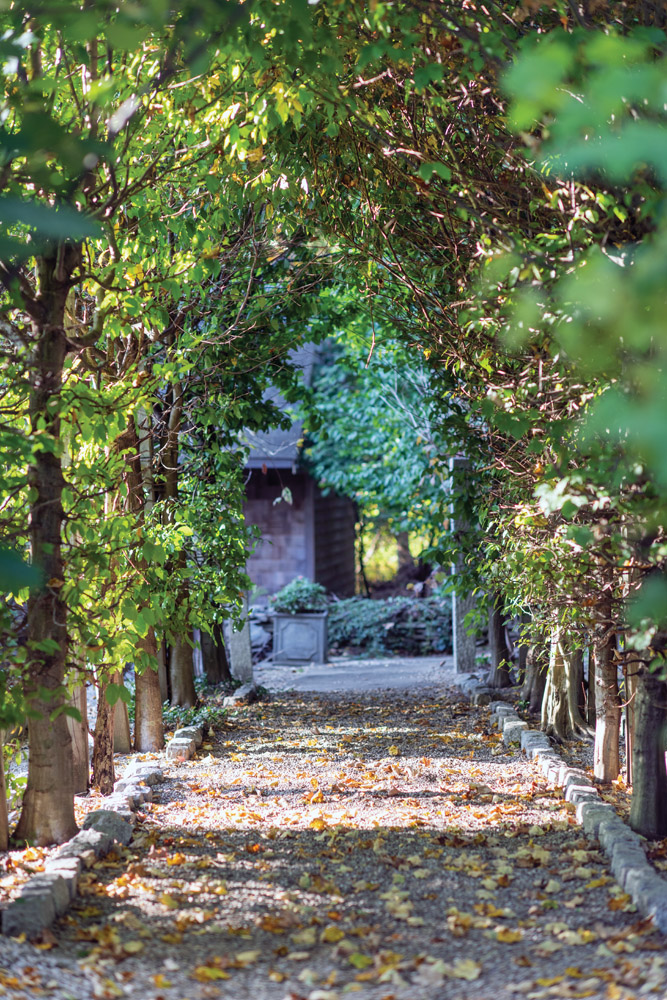
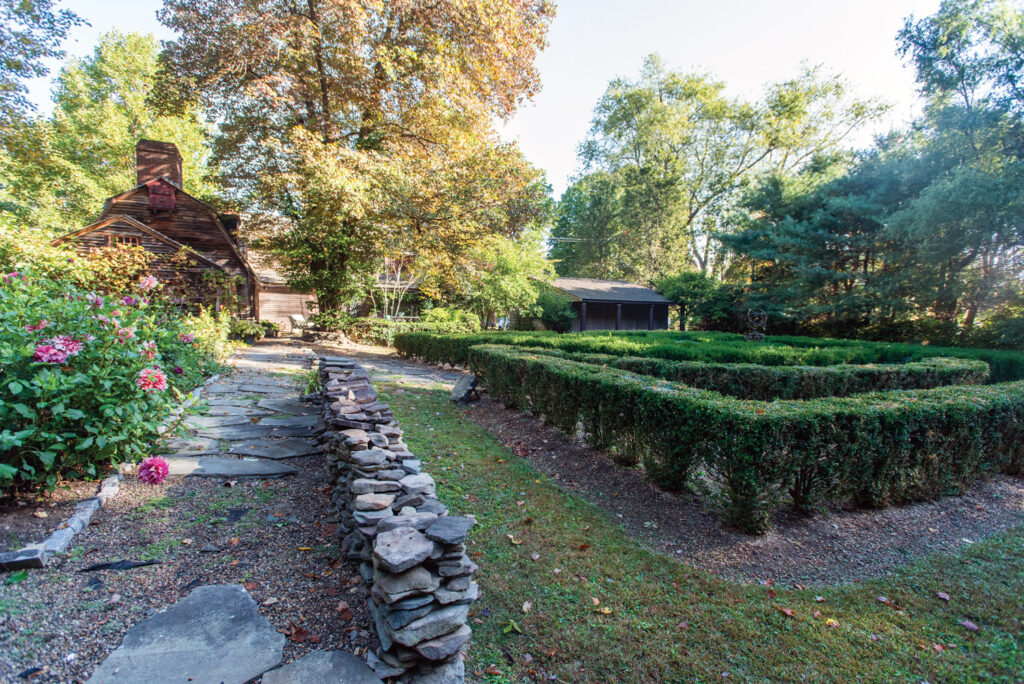
Resources
designer Jessica Marbain Interiors, Mechanicsburg, PA: (717) 697-6344
murals Julia Purinton, Medusa Studio, Ipswich, MA
Related Resources
early lighting Historic Housefitters Handmade 18th-century style lighting
Period Lighting Fixtures Reproductions of early American fixtures 1620–1850







